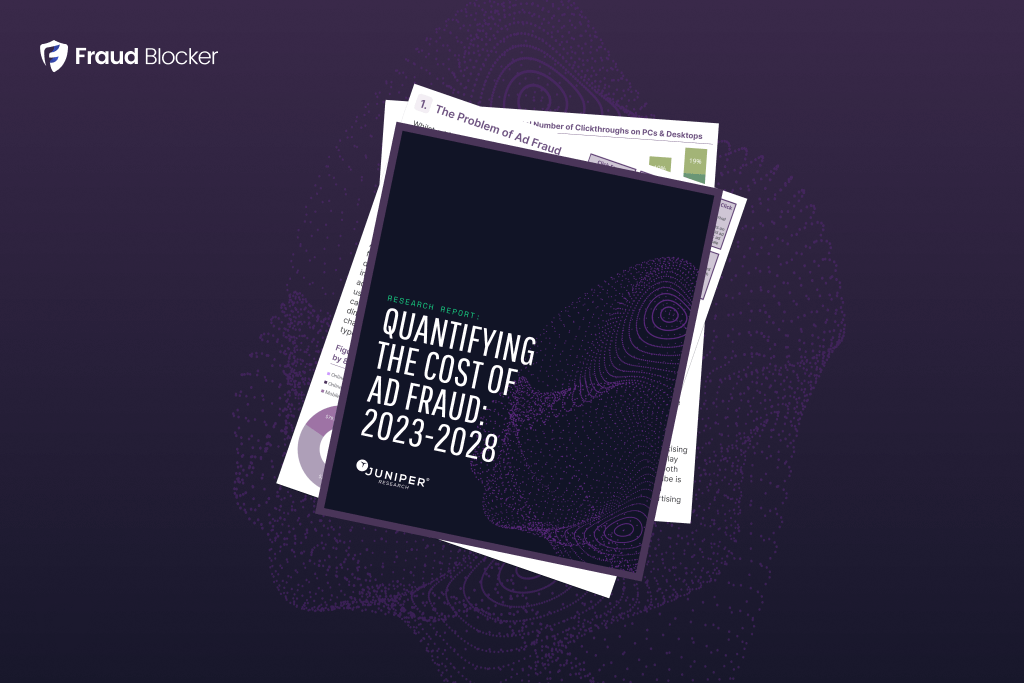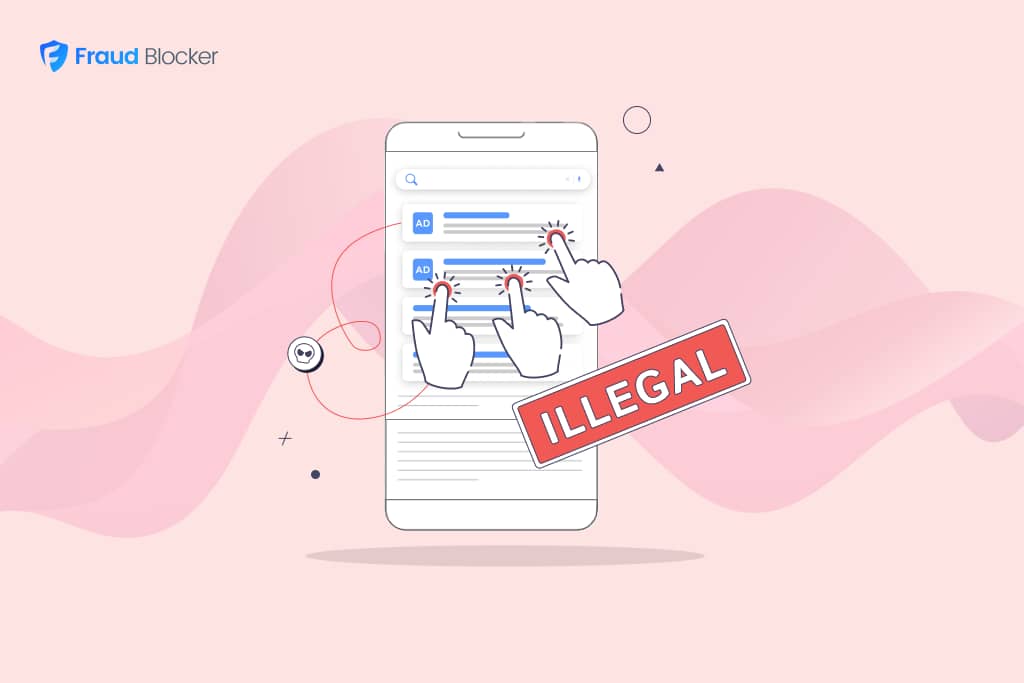
NEW New feature: Verify & block fake emails

We improve your ad performance by blocking click fraud and fake emails

Click fraud is costing advertisers billions in loses. Learn more here.

Click fraud is costing advertisers billions in loses. Learn more here.

Each year, businesses increasingly rely on digital channels for growth. And many of these channels – such as Google Ads and Meta Ads – rely on accurate data for its complex algorithms to work properly.
Click fraud can negatively impact the accuracy of your data, and thus the effectiveness of your marketing campaigns. If this continues unchecked, it can lead to misguided adjustments based on bad data.
We’ll look at how click fraud affects your analytics, broader implications for marketing campaigns, and the specific impact on various advertising channels.
Here’s a brief summary of how click fraud impacts your campaigns:
Click fraud refers to the act of generating fake clicks on online advertisements by individuals, bots, or automated systems. These clicks usually have a specific aim: to deplete an advertiser’s budget, alter performance metrics, or to drive revenue for the perpetrator.
Regardless of motive, the result can be significant distortion in your data, which can lead to misguided decision-making, and ultimately, wasted resources. Below, are a few key areas of impact:
Click fraud can significantly inflate your CTR, an important metric of ad rank (Google looks at expected CTR). This can mislead marketers and systems into believing their campaign is performing better than it actually is. See this example below:
Example: Your ad typically receives 100 legitimate clicks per day with a CTR of 2%. If click fraud adds 50 fraudulent clicks with the same number of impressions, your CTR will appear to increase to 3%. This may not seem like a lot, but is a 50% increase in click volume and 50% improvement in performance, which signals to platforms like Google that this ad is performing well. Consequently, you might allocate more budget here, but it would be based on false pretenses.
Fraudulent clicks can also drastically affect your conversion rates, making it difficult to assess the true effectiveness and profitability of campaigns.
Example: Imagine you are an e-commerce campaign where 1,000 clicks lead to 20 purchases (a 2% conversion rate). If 300 of those clicks were fraudulent and accounted for 0 conversions, your conversion rate should actually be much higher 2.86% (20 purchases / 700 clicks). This drop in conversion rate might lead you to conclude that your ad creative, landing page, or product offering is less effective than it actually is, prompting unnecessary changes to your strategy.
One of the most significant ways click fraud affects your analytics is by artificially depleting your budget. Every fraudulent click drains your advertising budget without contributing any value.
Example: You are running a pay-per-click (PPC) campaign on Google Ads with a $2 average CPC. If 500 clicks are fraudulent, you spent $1,000 that could have been better used to reach genuine prospects. Over time, this can lead to significant budgetary inefficiencies, reducing your overall campaign effectiveness. It may even lead you to believe a channel “doesn’t work”.
Click fraud can also negatively affect more qualitative insights by introducing false data into your analytics.
Example: Imagine you are reviewing your geo-location report in Google ads, and you saw significant traffic from one geographic location. Based on this, you believe there is a high level of interest from that region; however, if a majority of those clicks happened under false pretenses or from a bot farm, this can lead to poor targeting decisions, such as increasing bids for users in that area or tailoring your content to appeal to an audience that doesn’t actually exist.
In addition to all of the above reasons, click fraud can interfere with attribution models and may cause you to incorrectly reward the wrong channels. If fraudulent clicks are spread across different campaigns or channels, they can skew multi-touch attribution models, leading to incorrect conclusions about which touchpoints are driving conversions. This misattribution can result in an inefficient allocation of budget across your marketing mix.
Beyond the immediate impact on your analytics, click fraud can more generally impact the overall success of your marketing campaigns. These consequences may seem subtle, but can be highly detrimental to your long-term strategy.
Click fraud affects different advertising channels in unique ways, and understanding these differences is crucial for effective fraud prevention. Below, we examine the impact on some of the most commonly used channels.
Google Ads is one of the most affected platforms due to its widespread use and reliance on automated bidding models. Click fraud on Google Ads can lead to inflated CTRs and distorted quality metrics, which in turn affect your ad placements and cost-per-click (CPC) rates. Google Ads is an auction-based system, this means even a slight distortion in data can lead to significantly higher costs.
Meta Ads are also highly susceptible to click fraud, especially given the platform’s extensive targeting options. Fraudulent clicks from fake profiles on Meta platforms can lead to skewed demographic data, resulting in misinformed targeting decisions. For instance, if a large portion of fraudulent clicks comes from a specific age group or interest category, your future campaigns might be inaccurately optimized to target these segments, reducing their effectiveness.
On top of that, Meta Ads is a social network, so fraudulent activity can also affect engagement metrics, such as likes, shares, and comments. These inflated engagement metrics can lead to misleading performance reports, making it challenging to assess the true impact of your campaigns.
Programmatic advertising is particularly vulnerable to click fraud due to its automated nature and the vast number of placements involved. Perpetrators can easily exploit this system by creating fake websites or apps where fraudulent clicks are generated en masse. This not only wastes your budget but also exposes your brand to potential reputational risks if your ads are shown on low-quality or inappropriate sites.
In affiliate marketing, click fraud typically manifests as fraudulent clicks that artificially inflate traffic or conversions attributed to affiliates. This can lead to higher payouts to affiliates for non-existent conversions or sales, which increases your overall marketing costs. Additionally, fraudulent activity can damage relationships with your legitimate affiliates, who may feel unfairly treated if they see decreased commissions due to inflated fraudulent activity getting most of the attribution.
As we’ve seen, click fraud poses a significant threat to the integrity and effectiveness of your marketing campaigns. The financial costs, the ability to distort data, and broader implications for campaign performance makes it important to be proactive and take the necessary steps to detect and mitigate click fraud.
A comprehensive solution like Fraud Blocker helps you safeguard your campaigns by identifying fraudulent activity in real-time and implementing measures to prevent further damage.
By investing in a robust click fraud prevention tool, you can have peace of mind knowing that your marketing budget is spent efficiently, your analytics remain accurate, and your campaigns deliver the maximum possible return on investment.

This in-depth report was produced by independent research firm Juniper Research who analyzed over 78,000 datasets of digital ad activity.


